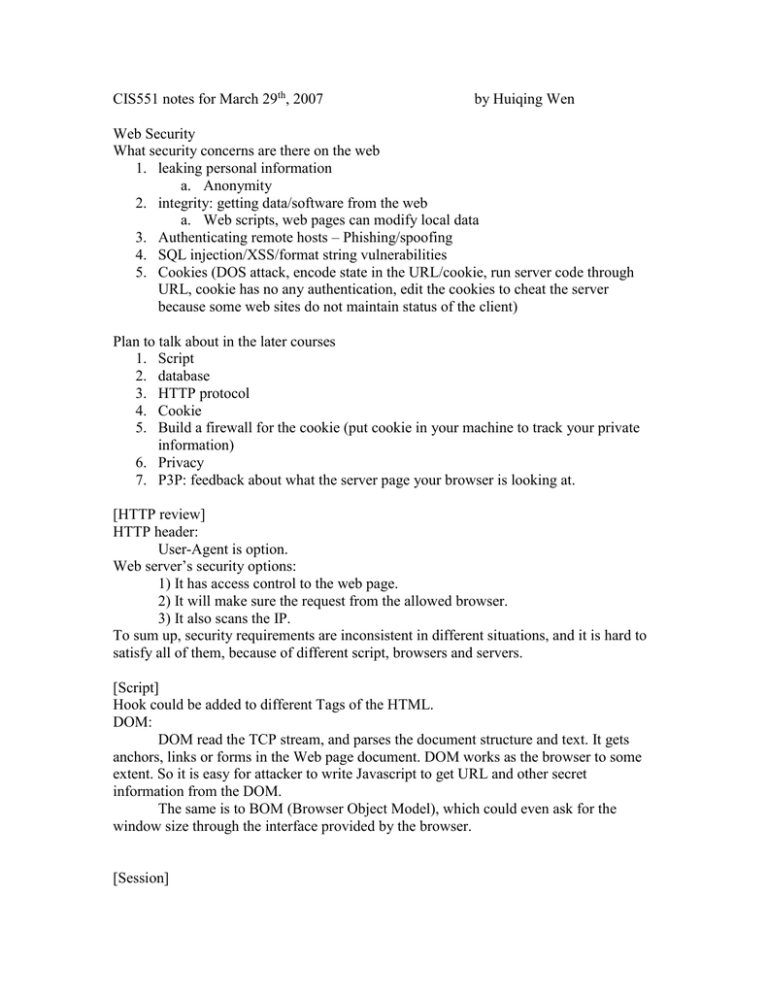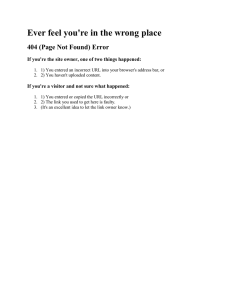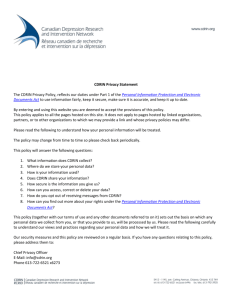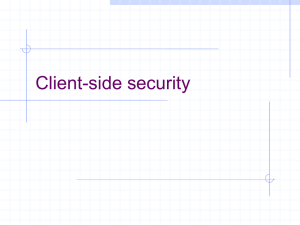CIS551 notes for March 29 , 2007 by Huiqing Wen
advertisement

CIS551 notes for March 29th, 2007 by Huiqing Wen Web Security What security concerns are there on the web 1. leaking personal information a. Anonymity 2. integrity: getting data/software from the web a. Web scripts, web pages can modify local data 3. Authenticating remote hosts – Phishing/spoofing 4. SQL injection/XSS/format string vulnerabilities 5. Cookies (DOS attack, encode state in the URL/cookie, run server code through URL, cookie has no any authentication, edit the cookies to cheat the server because some web sites do not maintain status of the client) Plan to talk about in the later courses 1. Script 2. database 3. HTTP protocol 4. Cookie 5. Build a firewall for the cookie (put cookie in your machine to track your private information) 6. Privacy 7. P3P: feedback about what the server page your browser is looking at. [HTTP review] HTTP header: User-Agent is option. Web server’s security options: 1) It has access control to the web page. 2) It will make sure the request from the allowed browser. 3) It also scans the IP. To sum up, security requirements are inconsistent in different situations, and it is hard to satisfy all of them, because of different script, browsers and servers. [Script] Hook could be added to different Tags of the HTML. DOM: DOM read the TCP stream, and parses the document structure and text. It gets anchors, links or forms in the Web page document. DOM works as the browser to some extent. So it is easy for attacker to write Javascript to get URL and other secret information from the DOM. The same is to BOM (Browser Object Model), which could even ask for the window size through the interface provided by the browser. [Session] -- A mechanism to maintain states URL accumulates the state of browser and information sent to server. The browser sends the URL to server. Then the server gets states and parameters from URL and maintains the state of the browser. (Security issue: history record of the URL with secret data) [Cookies] Browser visits a web server. The related cookies will be sent back to the server. Then the server could maintain the state of the client. DOM contains the access method to cookies. So Javascript could also get the cookies, which make the security issues harder. Whether to send cookies associates with specific directory or doc tree on the server, not only with the domain. [Server Side] What could go wrong? Concern: privacy Phishing site checks your cookie and gets your privacy. Information of those web sites that do not maintain client states in their local database is easy to be attacked. The Same-Origin Principle: It prohibits web sites from different domains from interacting with another except in very limited ways. It enable cookies and Javascript from sites of varying trustworthiness to coexist on the user’s browser without interfering with each other.





